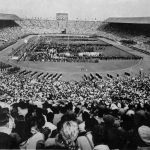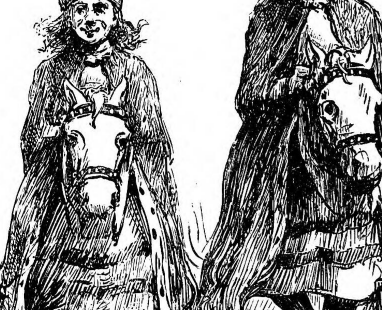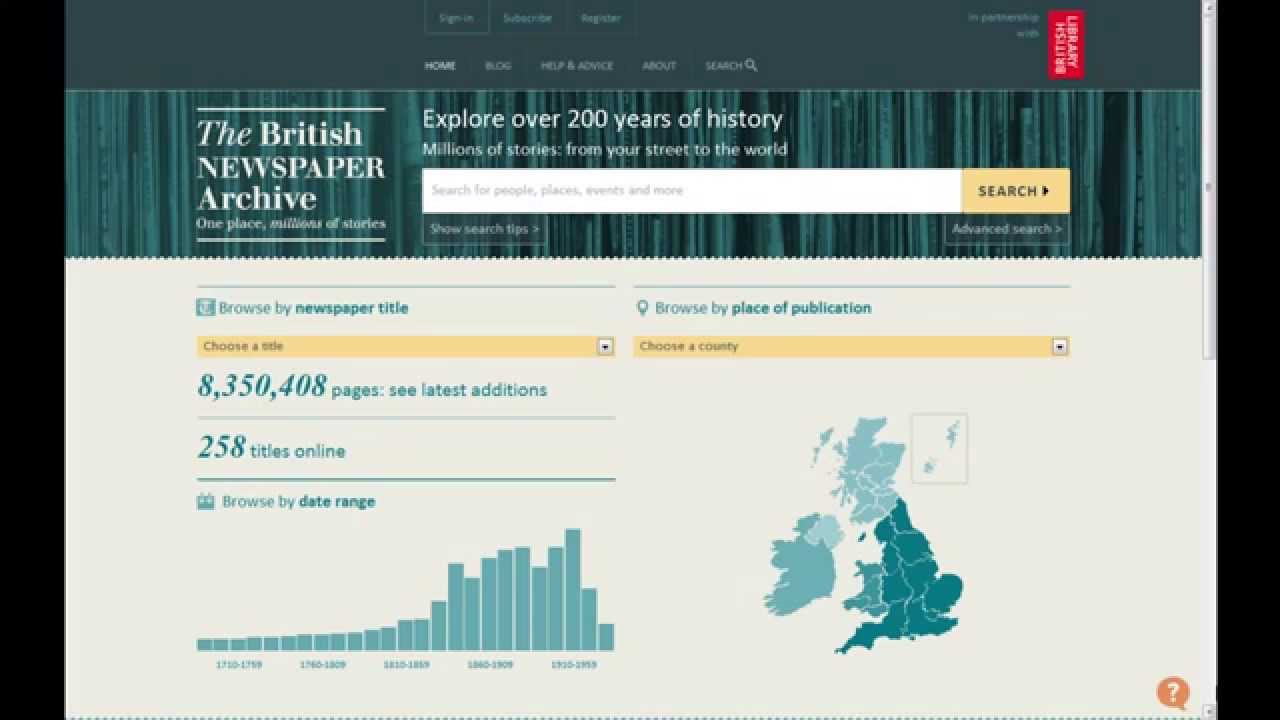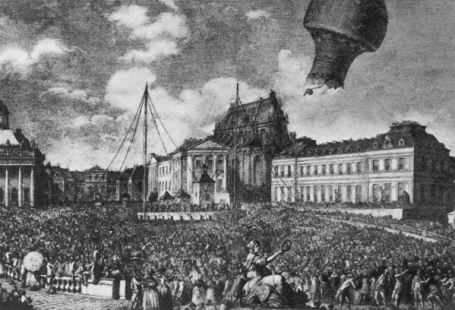This week at The Archive we have cooked up a baker’s dozen of brand new titles, with thirteen new titles joining us in all, and 51,462 new pages added across the collection, spanning over a century’s worth of headlines.
So read on to discover more about our new titles, which hail from Wales and Lancashire, as well as London, with a very special religious title joining us too. Also, read on to find out more about London’s first ever railway, which ran between London Bridge and Greenwich.
Register now and explore the Archive
Our first new title of the week is the Aberystwyth Observer. The ‘County Paper for Cardiganshire’ the Aberystwyth Observer was something of a rarity. Established in 1858, this weekly English language newspaper was one of Wales’s few Conservative publications. Circulating in Ceredigion, West Montgomeryshire and South Merionethshire, it contained local and general news and information, as well as featuring lists of visitors to the seaside town of Aberystwyth.
Aberystwyth Observer | 22 March 1900
Published by David Jenkins, the Cardiff Times in May describes the Aberystwyth Observer as a ‘Conservative organ, remarkable for its plain speaking.’ The same article went on to publish this statement regarding the difficulties of producing a Conservative newspaper in Wales:
It as easy, with sufficient capital and talent, to run a newspaper as it is to carry on any other expensive business. But it has to be borne in mind that Conservative journalism is not in Wales a source of profit…The Aberystwyth Observer is, we believe, the only Conservative paper ever carried on in Wales without outside pecuniary support. This has been done at some sacrifice of money, and a considerable amount of time and talent; by incessant labour, by day and by night, and by the kindly aid of numerous correspondents and literary contributors – of whom very few are Church people or Conservatives.
Despite these difficulties, and with the assistance of non-Conservatives, the Aberystwyth Observer appeared every Saturday priced at 1 ½ d.
We move now to Lancashire for our next new title, the Fleetwood Express. Established in 1877, Liberal title the Fleetwood Express was published in the Lancashire coastal town of Fleetwood every Wednesday, costing once pence.
Fleetwood Express | 6 April 1901
A localised issue of the Blackpool Times, it circulated ‘among the shipping and mercantile classes of [the] rising seaport, and in the agricultural district surrounding,’ Meanwhile, the Fleetwood Express was published from 40 Church Street, Fleetwood, by B. Bowman.
Our next new title of the week is an incredibly special one, namely the Jewish Record. Born out of a worry that younger Jewish congregants may be seduced by modern ways of thinking, thus eschewing tradition, the Jewish Record was founded in 1868. Reflecting ‘a more traditional view of Judaism held principally by less assimilated members of the community,’ this penny weekly was in competition with the Jewish Chronicle, which mainly reflected the interests of the Anglo-Jewish establishment and the rising Jewish middle class.
Edited by L.B. Abrahams, it was cheaper than the Jewish Chronicle, and ran with the Proverbs motto ‘The Lip of Truth Will Stand Firm Forever.’
Jewish Record | 28 October 1870
In 1869 the Home News for India, China and the Colonies describes how the Jewish Record contained ‘some interesting papers by Mr. Philip Abrahams of Gower-street, on ‘Classical Allusions to the Jews.’ The same newspaper reports how the Jewish Record ‘is said to be the organ rather of the Portuguese and Italian Jews,’ with the Jewish Chronicle representing ‘the interests of the Jews of Germany.’
Alongside the Jewish Record this week, we have several historic London newspapers which are made available to us thanks to the British Library’s Heritage Made Digital programme. And we begin our foray into this rich seam of publishing history with the Censor or Satirical Times.
The Censor or Satirical Times landed on the publishing stage on 4 January 1846, gaining publicity in the preceding weeks by offering a special competition – ‘twenty pounds for sixpence.’ An advert from late 1845 announced how ‘Thousands of Pounds Sterling Money will be given away with the CENSOR or SATIRICAL TIMES NEWSPAPER…Lose no time.’
Indeed, this sales tactic proved to be a great success, the Morning Advertiser on 8 January 1846 relating how:
The Proprietors of this Journal have the pleasure to announce in the consequence of the great patronage bestowed on the first Number, published January 4th, the sale of which has exceeded their most sanguine expectations, to extend to the next Number, which will be appear on the 11th instant…all pecuniary advantages, which were given to the first publication.
Censor or Satirical Times | 25 January 1846
With an annual subscription of one pound and six shillings, what could you expect from the pages of the Censor or Satirical Times? The Illustrated London News gives us a flavour of the first edition, its contents including:
…a fearless article upon the ‘present perilous and anomalous state of the Medical Profession.’ Also, a series of caustic political articles; amusing facetiae, by the first wits of the day; together with original notices of books, theatres and a variety of interesting and fashionable matters.
From the Censor to the Dissenter now, for our next new title. A weekly newspaper which first appeared towards the end of 1811, the Dissenter cost nine pence and appeared every Wednesday afternoon at 3 o’clock, published at premises on Fetter Lane, London. It promised to contain ‘a greater portion of original matter and general news than was ever offered to the Public in any similar work.’
At the time, dissenters were those who were separated from the Protestant mainstream, in this case, the Church of England. The Dissenter had this to say on ‘the subject of Religion:’
…as a doctrine, we cannot admit any controversy. By this decision we shall invariably, and without exception, abide; but to advocate it as a powerful and active principle, blending with and chastening the multitudinous affairs of men, our columns will also be open.
Religion, therefore, would be a driving force behind the Dissenter, as its name suggests. Meanwhile, it would observe:
…a strict impartiality to all sects, by a rigid exclusion of all communications which espouse partisan interests; and convey, at the same time, all new intelligence relating to or affecting the general interests of Religion. Its Political and general strictures espouse the cause of truth, but with moderation and firmness; and the usual indecent trash, which renders so many Journals an improper visitor in serious families, is, of course, excluded.
Our next new early London title had something of a radical flavour, this being the London Mercury 1836. This title was first published on 17 September 1836, aiming to ‘maintain the opinions which distinguished the True Sun during the first three years of its existence.’ Furthermore, the new newspaper pledged itself to:
…the establishment of Universal Suffrage and Vote by Ballot…the Repeal of the Whig Poor Law Amendment Bill….
London Mercury 1836 | 9 April 1837
It also promised to bestow ‘careful consideration…on every circumstance affecting Trade, Manufactures, and Agriculture,’ as well as on ‘the endless variety of matters in which the public generally takes interest.’ Amongst these matters were law, equity, criminal, police, courts, sport, miscellaneous news, foreign and domestic news, drama, fine arts, music, general literature and science.
Edited by John Bell, and published from Catherine Street on the Stand on Saturday evening for distribution on Sunday, the London Mercury cost 4 ½ pence.
John Bell was behind many different publications in the 1830s, as was fellow editor Douglas Jerrold. One of his titles was named for himself – Douglas Jerrold’s Weekly Newspaper – which was first published on 18 July 1846. It promised to feature ‘Numerous original articles by the editor and eminent literary associates, being in every respect a full and efficient newspaper, advocating the cause of the people.’
With 72 columns, and costing six pence, it contained a ‘Series of Papers of Social Importance and Entertainment…and also a mass of News and Information well digested and arranged, suitable to family reading.’
Douglas Jerrold’s Weekly Newspaper | 2 June 1849
Edited and owned by Douglas Jerrold (1803-1857), a Liberal dramatist and writer, the Weekly Newspaper was just one of his many literary projects. His first play, authored when he was just fourteen, appeared on stage in 1821, and his success was cemented with the production of Black-Eyed Susan in 1832.
Alongside his dramatic efforts, Douglas Jerrold wrote for many periodicals including the Athenaeum and Punch. Indeed, it was him who coined the phrase the ‘palace of very crystal’ during the Great Exhibition of 1851, leading to the naming of the Crystal Palace. He also founded and edited the Illuminated Magazine and Jerrold’s Shilling Magazine.
His greatest success, however, was to come from 1852 onwards when he edited Lloyd’s Weekly Newspaper, catapulting it from being basically a nonentity, to a successful publication with a circulation of 182,000.
When Jerrold passed away in 1857, Charles Dickens himself was a pallbearer at his funeral.
Our next new title of the week is the London Free Press. The London Free Press first appeared in 1827, printed and published by William Lowe and edited by William Spencer Northouse.
A Sunday newspaper ‘of the largest size’ and costing seven pence, it was:
…to transcend and eclipse every other paper of the same character – it was to advocate practical economy and partial reform – to correct all existing abuses – and to furnish the latest and most authentic intelligence from every part of the world.
London Free Press | 18 March 1827
Despite these lofty aims, Lowe’s and Northouse’s publishing endeavour came tumbling down when they were accused of defrauding investors. But what content did the short-lived Sunday title contain? The 11 March edition promised to feature ‘a complete view of the important DEBATES on the CORN and CATHOLIC QUESTION,’ alongside ‘some most important Original Articles.’
We now move onto new title number nine – the National Standard. Standing ‘For the Protestant Religion and the Liberties of England’ the National Standard was first published on 6 March 1858. It promised to be ‘a First-Class Weekly Protestant Family Newspaper,’ which would contain ‘Articles on the leading Religious and Political Questions of the Day, by writers of eminence.’
The National Standard also promised to contain a ‘Weekly Summary of News,’ both foreign and domestic, as well as ‘Parliamentary Intelligence,’ the ‘Spirit of the Press,’ ‘Reviews and Critical Notices’ and notes on ‘Fine Arts.’
National Standard | 10 April 1858
Moreover, the National Standard pledged to:
…faithfully advocate the Scriptural Principles of the Reformation, the great constitutional privileges conferred upon this nation at the Revolution of 1642, and the preservation of those ancient landmarks which have earned to the British Empire the first amongst the nations of the earth.
Costing six pence stamped or five pence for an unstamped version, the National Standard was published from Bouverie Street, just off Fleet Street.
Our next new title of the week had a slightly different focus, although it too was also published in London. First published on 22 July 1848, the Emigrant and Colonial Advocate was a weekly journal which appeared every Saturday and cost six pence. It was ‘devoted to colonial interests and emigration,’ promising to be ‘the organ of intelligence for all classes of emigrants and their friends.’
Emigrant and Colonial Advocate | 29 July 1848
And in case the provenance of the newspaper was doubted, and the expertise of its writers thrown under scrutiny, an advert for the Emigrant and Colonial Advocate describes how its proprietor:
…has travelled 100,000 miles in search of information, through most of the United States of America, from Maine to Mississippi, and the various settlements in Canada and the Lakes, throughout Australia, from Port Phillip, overland, to Sydney and the Liverpool Plains, across Van Diemen’s Land, through the rich districts of South Australia, many parts of New Zealand and the Cape of Good Hope, besides the sugar colonies and temperate regions of South America.
Meanwhile, the proprietor would ‘be assisted in the editorial department by several talented writers, all practical men and travellers like himself.’
Our final trio of new titles is headed up by the Evening Star (London). Reputedly ‘read in every city, borough and town, of importance in England, Ireland, Scotland and Wales,’ it advocated for ‘the rights of all.’
Evening Star | 14 February 1843
Published by G.F. Pardon from The Strand, the Evening Star appeared every day priced at four pence. It contained general correspondence, international news, ‘City Intelligence,’ as well as the latest from the police, courts and the navy. A popular feature of the Evening Star were the biographies it produced, such as ‘The Life of George Washington.’
Our penultimate new title of the week is the Monthly Times, which was positioned for the ‘Indian Community.’ Although published in London, it was sent via the Overland Mail to reach its target audience.
First published on 4 February 1842, it was created to address ‘the inadequate means which the Indian Public at present posses of acquiring a competent knowledge of the events which take place in Great Britain and Ireland, and Europe generally.’ Indeed, the Monthly Times exposes ‘the positive want of a well-arranged though concise organ of intelligence’ for an Indian audience, promising itself to provide a ‘clear and lucid summary of political events.’
Monthly Times | 7 October 1845
Therefore, within the pages of the Monthly Times you will find summaries of the latest political news, as well as the latest intelligence from across Britain, Ireland, and the rest of the world, from Prussia, Africa, Spain, China and the United States, to name a few of the countries covered by this most thorough of publications.
Another monthly title destined for distant shores was the English Mail. Designed ‘specially for circulation throughout the Colonies of New South Wales, Victoria, South and West Australia, Tasmania and New Zealand,’ this publication cost eight pence and filled 32 pages.
Featuring intelligence specifically for Australia and New Zealand, as well as news from home and abroad, the English Mail was another thorough title and featured in its supplement shipping and passenger lists, notices of births, marriages and deaths, as well as a section dedicated to the ‘Spirit of the British Press.’
So ends our journey through our lucky thirteen new titles of the week! Meanwhile, of particular note amongst the updates to our existing titles this week are the over 4,000 pages we have added to the Weekly Chronicle (London).
London’s First Steam Railway
The first steam railway in the capital, and the first dedicated to carrying passengers, the first section of the London and Greenwich Railway opened in February 1836 between Spa Road, in Bermondsey, and Deptford. Work was completed that year to extend the line to Tooley Street (London Bridge), with the line reaching Greenwich in 1838.
Our newspapers capture the excitement of this new transportation and technological innovation. Newly added pages from the Weekly Chronicle (London) describe how on 2 October 1836:
Great exertions are being made to complete the line of the London and Greenwich Railway, in order to open it next month. During the past week between 500 and 600 men have been employed night and day.
These ‘great exertions’ were soon to come to fruition, with the Weekly Chronicle reporting a week later:
Part of the London and Greenwich Railway will be opened on Monday, the 10th instant, from Bermondsey-street to Deptford; and it is confidently expected that the whole line will be ready to be opened by the middle of next month.
By 23 October 1836 the Weekly Chronicle is singing the praises of this new transport innovation, describing how the ‘annual expense between London and Greenwich by stage coach twice a-day (inside) is £54 15s,’ whereas the commuter of the 1830s could expect to pay £36 10s for a First Class ticket on the new railway. There was also a time saving of 45 minutes by train.
‘The London and Greenwich Railway as it was in 1837’ | Illustrated London News | 10 January 1948
And by December 1836, the line was functioning between Tooley Street (London Bridge) and Deptford. The Weekly Chronicle tells of how the ‘curiosity has drawn a vast number of persons to make the experiment of a trip by this new conveyance.’
The trip, according to the Weekly Chronicle, took all of 10 minutes, with space for 200 passengers in the carriages, some of which were ‘open at the sides.’ Servicing the line were six engines, which ran every half an hour.
London and Greenwich Railway – at rooftop level | Illustrated London News | 19 September 1970
And by early 1837 the railway was going from strength to strength, the London Mercury 1836 reporting on 19 February how:
We understand that on Sunday last the trains of the London and Greenwich Railway Company, though not running during the hours of Divine Service, carried 6500 persons, and that upwards of 180l. was taken.
Indeed, the London and Greenwich Railway proved to be a great success, carrying 1.25 million passengers in its first four years, and showcasing the demand for new railway services in the capital and beyond.
New Titles
Title |
Years Added |
| Aberystwyth Observer | 1869, 1874-1884, 1887-1895, 1899-1910 |
| Censor or Satirical Times | 1846 |
| Dissenter | 1812 |
| Douglas Jerrold’s Weekly Newspaper | 1846-1851 |
| Emigrant and the Colonial Advocate | 1848-1849 |
| English Mail | 1860 |
| Evening Star (London) | 1843 |
| Fleetwood Express | 1889, 1896-1917, 1919-1920 |
| Jewish Record | 1868-1871 |
| London Free Press | 1827 |
| London Mercury 1836 | 1836-1837 |
| Monthly Times | 1842, 1844-1849 |
| National Standard | 1858, 1860 |
Updated Titles
This week we have updated six of our existing titles.
You can learn more about each of the titles we add to every week by clicking on their names. On each paper’s title page, you can read a FREE sample issue, learn more about our current holdings, and our plans for digitisation.
Title |
Years Added |
| Haslingden Gazette | 1915 |
| Morning Herald (London) | 1855-1860 |
| Northern Guardian (Hartlepool) | 1901-1902 |
| Swansea Journal and South Wales Liberal | 1899-1900 |
| The News (London) | 1808 |
| Weekly Chronicle (London) | 1836-1840, 1851 |
You can keep up to date with all the latest additions by visiting the recently added page. You can even look ahead to see what we’re going to add tomorrow.






















